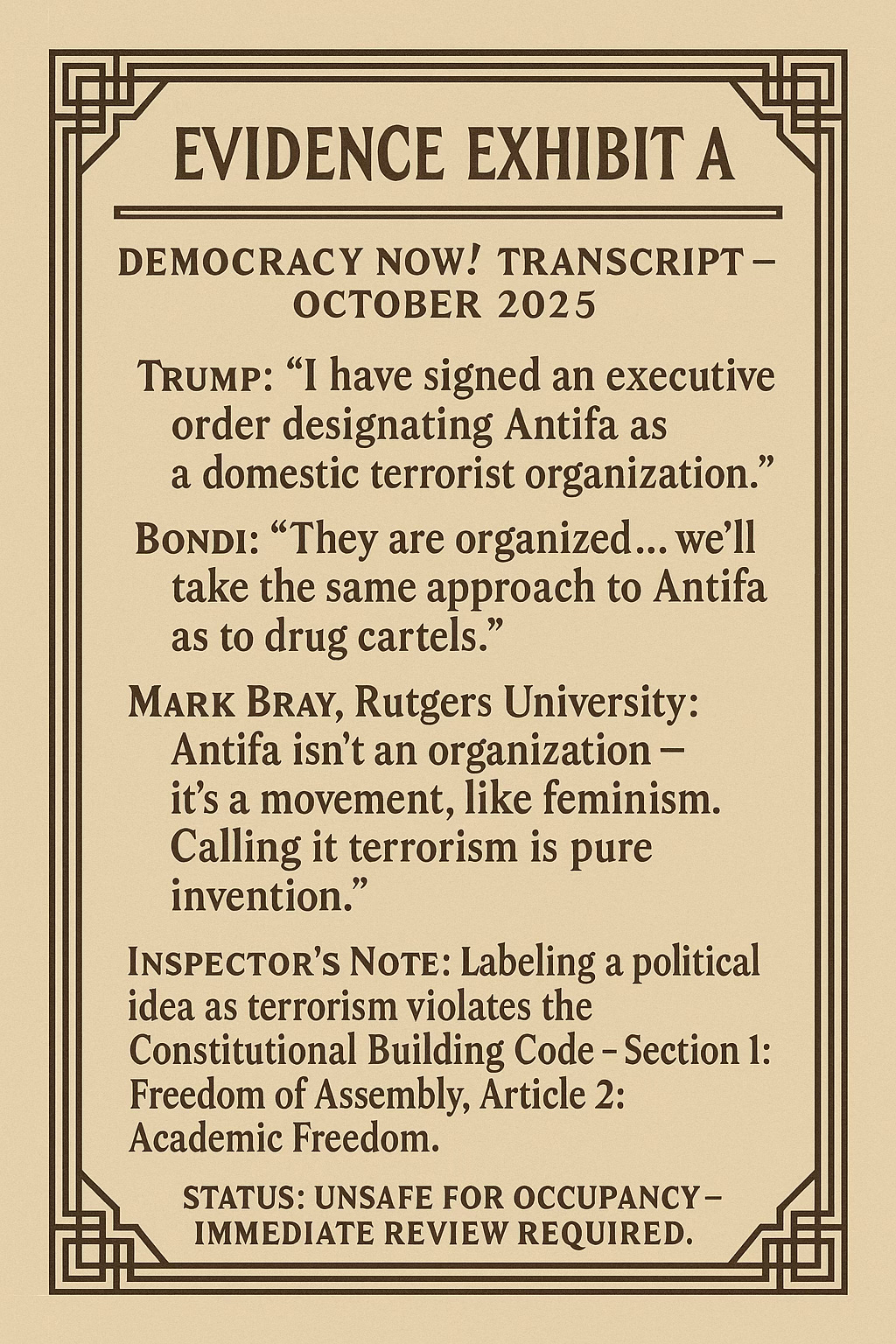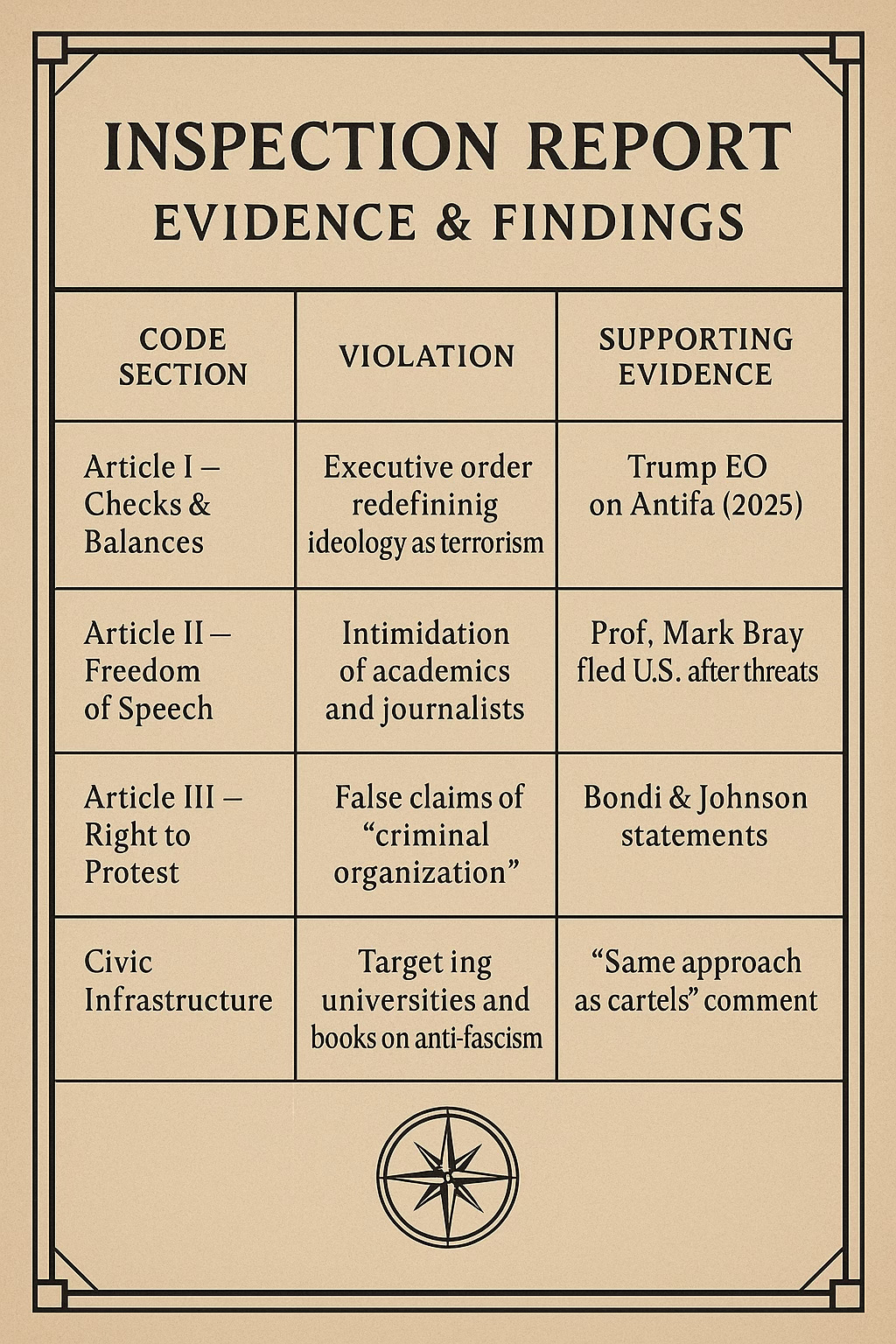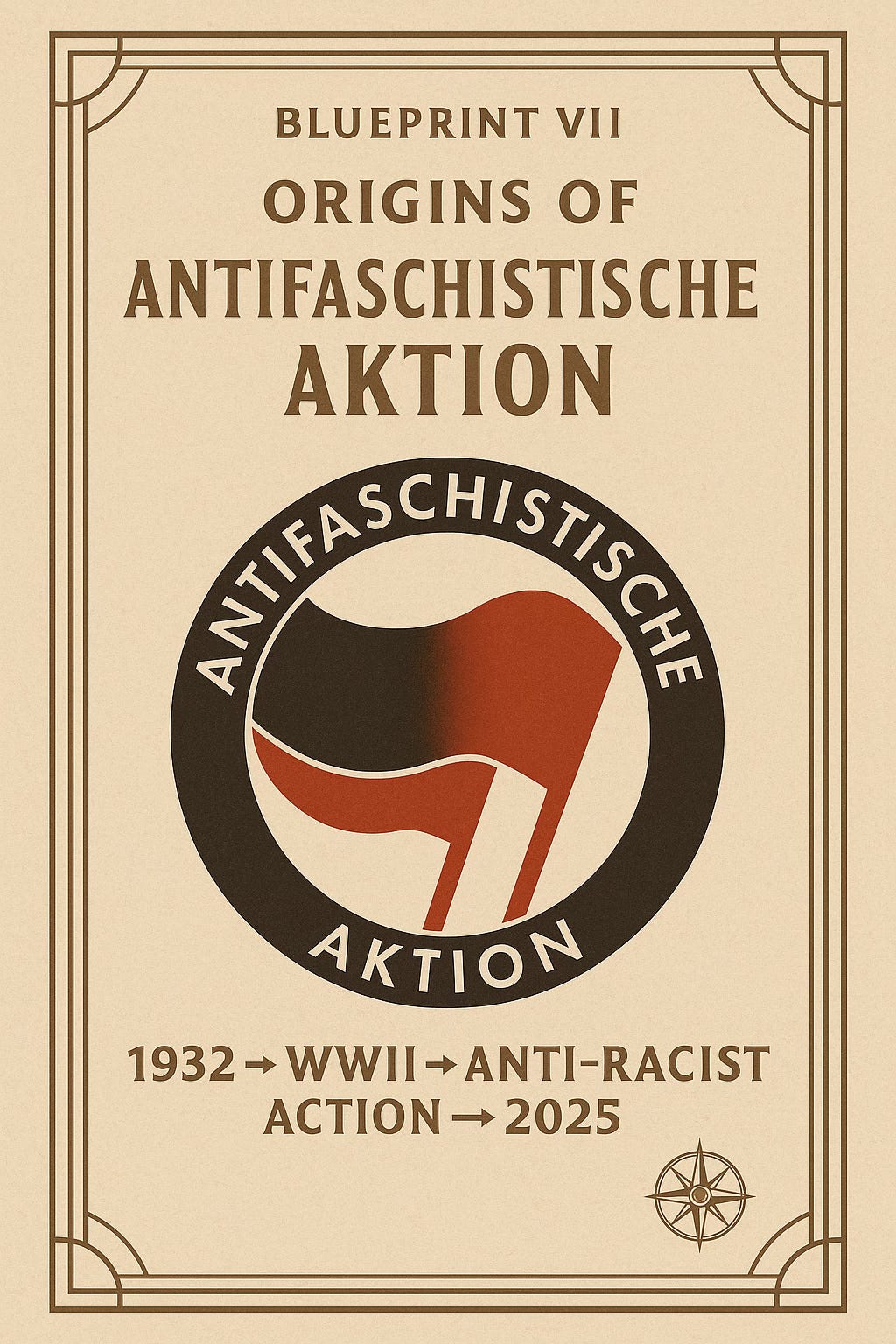🏗️No Kings Day: When Loving Your Country Is a Zoning Offense
An Inspection Report on the Architecture of Authoritarianism
🧱 I. Public Works Inspection Notice
On October 18, 2025, Americans stepped into the streets for a nationwide civic inspection called “No Kings Day.”
From courthouse steps to college quads, citizens checked democracy’s foundation for cracks: press freedom, judicial independence, and the right to assemble.
This isn’t demolition — it’s maintenance.
🏗️ II. The Permit Office Strikes Back
Instead of welcoming oversight, the permit-holders branded the inspectors “un-American.”
Speaker Mike Johnson: “Hate America Rally.”
Attorney General Pam Bondi: “Antifa cells funded by foreign agitators.”
President Trump: posthumously honored Charlie Kirk and signed an executive order labeling Antifa a domestic terrorist organization.
Yet, as historians and journalists remind us, Antifa isn’t an organization at all — it’s a historical current, the civic reflex of people who say “Never Again” before tyranny pours the concrete.
🏛️ III. Building Code Section 1: Load-Bearing Truths
Truth is a load-bearing wall. Remove it, and the structure buckles.
By equating dissent with terrorism, the administration is rewriting the First Amendment building permit in invisible ink.
When Bondi vows to treat Antifa “the same way we treat drug cartels — bombed in the Caribbean,” she’s not enforcing code; she’s demolishing due process.
🧰 IV. Inspection Report — Evidence & Findings
⚖️ Evidence Exhibit A
(Democracy Now! Transcript — October 2025)
Trump: “I have signed an executive order designating Antifa as a domestic terrorist organization.”
Bondi: “They are organized… We’ll take the same approach to Antifa as to drug cartels.”
Mark Bray, Rutgers University: “Antifa isn’t an organization — it’s a movement, like feminism. Calling it terrorism is pure invention.”
Inspector’s Note: Labeling a political idea as terrorism violates the Constitutional Building Code — Section 1: Freedom of Assembly, Article 2: Academic Freedom.
Status: Unsafe for Occupancy — Immediate Review Required.
🏚️ V. Structural Hazards and Historical Echoes
In 1936, American volunteers of the Abraham Lincoln Brigade crossed the Atlantic to fight fascism in Spain. They were later branded “premature anti-fascists.”
Now, history repeats digitally: scholars like Mark Bray are doxxed, threatened, and detained for writing about the same subject.
As Twain might say: “History doesn’t repeat — it just forgets to renew its permits.”
🏗️ VI. Blueprint VII — Historical Foundation: The Anti-Fascist Tradition
Before Antifa was a scare-word, it was a lifeline.
The term originated in Weimar Germany (1932) when socialists, trade unionists, and Jewish activists formed Antifaschistische Aktion to resist Hitler’s rise.
Their flag — two overlapping red and black banners — symbolized unity between socialists and anarchists against fascism.
After World War II, anti-fascism persisted in Europe and beyond:
In France and Italy, it became a civic duty — routine inspection for cracks of authoritarian rot.
In the U.S., groups like Anti-Racist Action (1980s–90s) carried that tradition forward.
Antifa isn’t a club; it’s an immune system — a reflex that activates whenever power becomes lawless.
Criminalizing it is like outlawing antibodies.
🏛️ Caption — Blueprint VII
“Antifaschistische Aktion” means Anti-Fascist Action in German.
Founded in 1932 Weimar Germany to resist Hitler’s rise, its red-and-black flag became the enduring civic blueprint for modern anti-fascist movements — from Europe’s resistance brigades to today’s defenders of democracy’s structural integrity.
🌇 VII. Conditional Approval
The Republic remains standing — but its inspectors are under fire.
If propaganda replaces planning and history is classified as radical, the next demolition order may carry our own signatures.
Until then, the notice stays posted:
🏗️ NO KINGS — INSPECTION IN PROGRESS.






